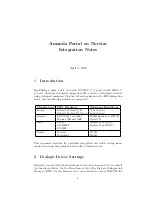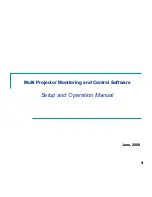
another regular (non-Amanda) station, and that station forwards to voicemail,
Amanda will receive the same integration pattern, such as
89_76
, in which
case Amanda will take voicemail for the mailbox associated with station 89,
with the From field of that message set to the mailbox associated with station
76. So, Amanda needs to be able to distinguish these two cases, even though
superficially, the integration pattern looks identical.
The way Amanda does this is by knowing its own pilot number. Using 46 as
an example, then when Amanda sees integration that starts with
46_
, Amanda
knows this is a direct call from an extension even though a busy forward was
involved. Amanda will then treat that call the same as if it had gotten the
direct call integration pattern, such as
_76
.
When you look at the
norstar.tcl
file, you will see that it is only a few lines
long. Change the “46” that appears on line 6 of the file to the actual pilot
number of your Amanda system.
Next, there is another special case.
When an outside line rings directly to
Amanda, you may want trunk integration, so that Amanda can react differently
depending on which trunk line the call came in on. If you do not care about
trunk integration, then no further changes are needed—save the file and exit
Notepad, and your configuration is complete.
If you do need trunk integration to work, then you may need to edit line 11 of
the
norstar.tcl
file. On that line, Amanda compares the string that shows up
in the (virtual) LCD display with the string beginning with
Line
. If it matches,
then Amanda will receive integration data
T
xxx
for the call, where
xxx
is the
line number (zero padded) of the call. If you have named your lines other than
the default Line
XXX,
then you will have to change this pattern to match your
actual line names. For simplicity, we recommend that you leave your line names
with their default values.
Once you have made the necessary changes, save the
norstar.tcl
file, and you
have completed your integration.
6
Accessing Special Norstar Features
Amanda Portal defines a special
KF
token for accessing phone system features.
However, the Portal
KF
token is somewhat different from the version in other
Amanda Norstar products. The Portal version of this token simply passes its
argument, after any expansion, through to the underlying
dial
command, so
that the digits are passed to the Dialogic driver. The Dialogic driver supports a
number of special dialstrings for accessing switch-specific features (see Dialogic’s
PBX Integration Board User’s Guide
for details). The special character
$
is used
7


























